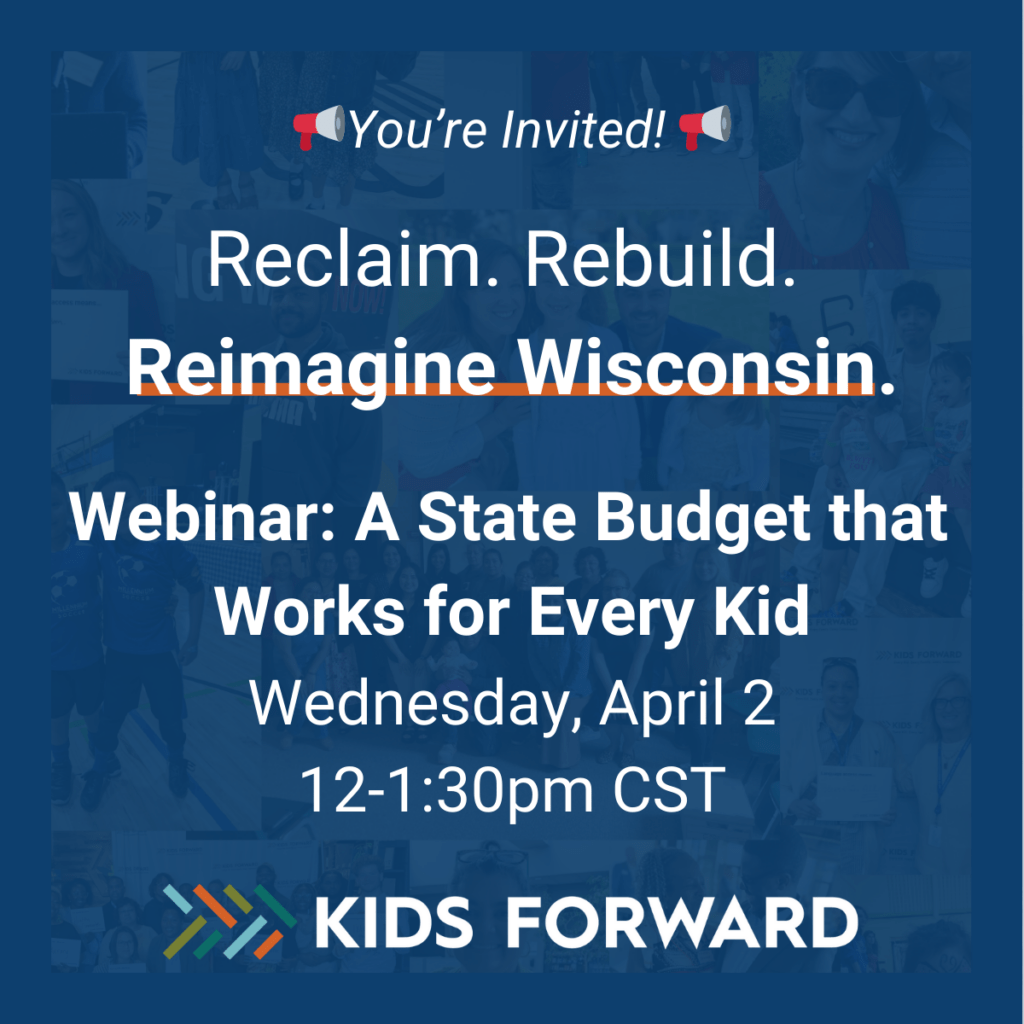Tuesday night, Governor Walker will give his State of the State address. The Governor is expected to use the address to talk about his vision of where Wisconsin stands, and to outline his priorities for the second half of his term.
We hope Governor Walker will also use this opportunity to discuss the best ways to improve the well-being of Wisconsin’s children and families. The Great Recession and slow recovery in Wisconsin have been a rough time for kids and families, although not without a few bright spots. Here is a quick survey of how Wisconsin’s children and families are faring, especially in regards to poverty and health care:
- Nearly a quarter of a million Wisconsin children lived in poverty in 2011, according to the most recent estimates from the American Community Survey. That amounts to a 37% increase since 2008, and it means that one out of every six Wisconsin children lived in poverty in 2011.
- 40% of Wisconsin schoolchildren were eligible for free or reduced school lunch in 2012, up from 28% of school children eligible ten years earlier. (See the county-level data here.)
- Among the 17,000 families that in January 2012 visited a clinic participating in the federal preventive nutrition program for women, infants and children (WIC), 54% reported living under conditions of food insecurity over the past year, compared to 44% in 2002. (Source: Food Insecurity in the Wisconsin WIC Population, August 2012)
- There are enormous disparities in the wellbeing of Wisconsin children. Some of those disparities are rooted in geography – for example, only 1 out of every 23 children in Ozaukee County lived in poverty in 2011, compared to one out of every three Milwaukee County children. There are also deep racial disparities in the wellbeing of Wisconsin children, with a poverty rate for Black children in Wisconsin of 49%, nearly four times that of White children.
- Employer-sponsored health insurance has been dropping sharply – falling by 431,000 in Wisconsin from 2000 to 2011 (and by 14.2 million nationally during that period). (Read more.)
- Wisconsin has one of the lower rates of uninsured state residents nationally (7th lowest in 2011), but more than half a million Wisconsinites were uninsured in 2011. That is enough people to fill all the seats at Lambeau Field seven times, and it contributes to the fact that hospitals provided about $1.2 billion of uncompensated care in that fiscal year (and much of that cost is shifted onto people with insurance).
- BadgerCare enrollment fell by more than 21,600 adults in the second half of 2012, following changes in premiums and eligibility that the state began implementing in July.
- Because of state policy choices, BadgerCare Core Plan enrollment has plunged by more than two-thirds over the last 3 years – from more than 65,000 childless adults in January 2010 to only about 20,000 now – while the waiting list has climbed to about 148,000.
These facts pose large challenges for Wisconsin, but there is no reason that we can’t make significant progress on reducing poverty and particularly with respect to improving access to health care. Thanks to the options available in the federal health care reform law, Wisconsin should be able to take tremendous strides this session in making quality, affordable health insurance available to state residents if lawmakers will put problem solving ahead of partisan posturing.
Jon Peacock and Tamarine Cornelius




